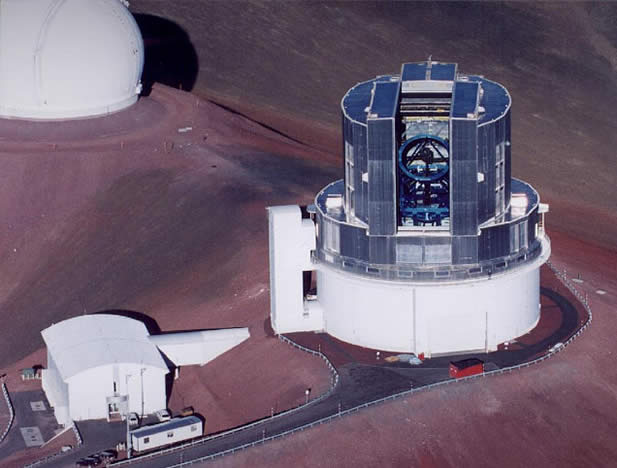Subaru
The Subaru telescope, located at the summit of Mauna Kea in Hawaii, has a primary mirror diameter of 8.2 m. It is operated by the National Astronomical Observatory of Japan (NAOJ), National Institute of Natural Sciences.

Web Site: http://www.naoj.org/
Lead Investigator: Yutaka Komiyama.
The telescope is aiding the Coma cluster survey in two important ways.
(1) It will be used to perform an H-alpha survey with Suprime-Cam, a wide field-of-view (27 x 34 arcmin) instrument/camera. A special narrow-band H-alpha filter has been custom-built for the (distance of the) Coma cluster. This allows astronomers to detect ionised hydrogen gas, a tracer of star formation in galaxies. The survey will probe 100 times fainter than previous surveys of the Coma cluster, reaching fluxes as faint as 6x10-18 erg/s/cm2, and allowing us to see which galaxies are effectively still under construction.
(2) Deep images using broad-band filters in blue and red light (B,R,i) will also be acquired with Suprime-Cam. These will allow us to detect very small faint galaxies. In fact, several thousand "dwarf galaxies" are expected to be found. By studying their colour, we can learn about their past star formation history, as opposed to their current star formation rate. We can also deduce their stellar mass-to-light ratio, enabling one to estimate the stellar mass of each galaxy from its light. With kinematic information from other telescopes, i.e. measurements of how fast the stars are moving in each galaxy, we can also derive the total dynamical mass of each galaxy. Possible discrepancies with the stellar mass will reflect the existence and quantity of dark matter.
